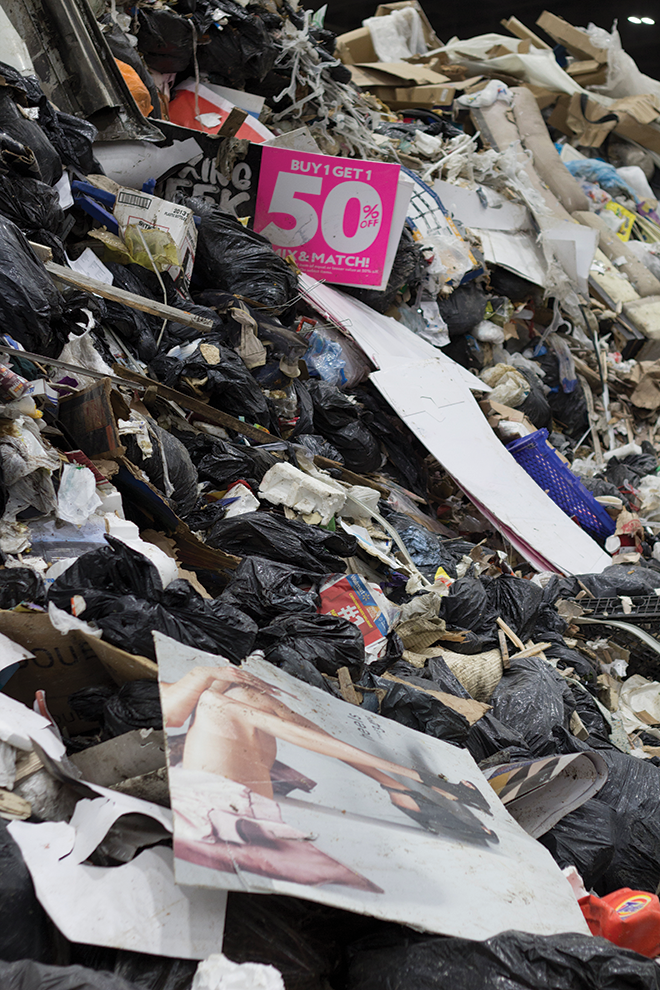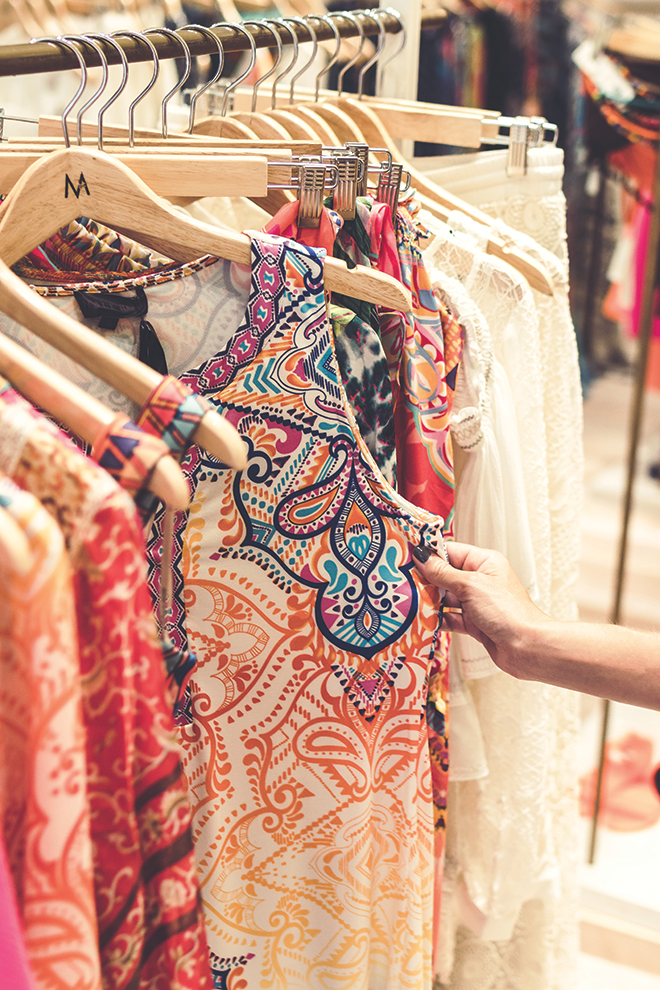By Oliver Berger –
What goes through your mind when you open your closet? I will tell you what has been echoing in my brain lately…
“The clothing industry is the second-largest polluter in the world, second only to the oil industry.”

For the past decade companies have been mass producing more clothes than ever before. In an effort for us to buy more and keep shares high, fashion moguls create new season trends quicker and quicker. This makes us feel like the last clothes we bought are already out of style. To keep up with the competition, they make them cheap and of low quality in countries where labour and production costs are minimal. It is called “fast fashion”.
So, what are the impacts?
Water consumption is extreme when it comes to making clothes; cotton is a thirsty plant. They say it takes over 10,000 litres of water to make one pair of jeans. Of course, this considers the water necessary for growing the plant, as well as the dying and washing.
Pesticides and fertilizers, especially GMO type applications, are rampant in cotton production. Crops are sprayed all over the world raising nitrogen levels in the soils and nearby water ways to toxic levels. Nitrogen can also enter the atmosphere as nitrous oxide, a greenhouse gas.
Many clothes are manufactured in countries where work safety and environmental standards are sub-par. Waste water from these factories is contaminated with bleaches, acids, alkalis, dyes, solvents, resins, and even fluorocarbons. Next stop, the water sources nearby, and eventually down into the oceans we all share.
Because the demand for new clothes is not in these developing countries where they are made, clothes are shipped all over the planet, contributing to our ever-growing emissions problem.

Not only that, many fabrics we wear and use are synthetic, made from plastics and other non-organic materials. When we wash or put these items in the dryer, tiny microfibers are released into our drains and garbage cans. Once these microfibers make their way into nature they are consumed by a multitude of organisms and make their way up the food chain by way of biological magnification.
Now it is easy to understand how the textile industry is one dirty laundry basket.
This quote regarding the industry as the second largest industrial polluter in the world came from Eileen Fisher, a high-end retailer, during an award speech in 2016. It has been argued back and forth whether this industry truly is number two, but either way the phrase stuck, and she made an important point.
Jason Kibbey, CEO of the Sustainable Apparel Coalition, said, “It’s often quoted, and could theoretically be true, but at this point, I don’t have any credible facts to assess where the fashion industry would rank.”
A Danish Fashion Institute is analyzing multitudes of data to see where this industry really ranks on a global-impact scale and should be publishing a report later this year. For now, they say, “Fashion is one of the most resource-intensive industries in the world, both in terms of natural resources and human resources.”
Reuse, reuse, reuse is the most common theme for textiles. Wear the heck out of your favourite clothes then pass them onwards when they no longer bring you joy. Places like The Salvation Army, Value Village, and Big Brothers Big Sisters have been a great source for depositing our unwanted textiles. However, what you might not hear is that they are completely overwhelmed with the number of items dropped off and donated. Sorting through this mess is more than a full-time job. Volunteer for a day or two if you are curious.
Repair. Learn how to fix and patch holes and rips. We have many talented seamsters in our area; take advantage of those skills.
Repurpose. If clothes are beyond repair find a buddy who loves mechanics—they can use them as rags. Or take a quick look through Pinterest; I couldn’t believe the creations I discovered crafted out of old fabrics.
When all else fails, recycle. Bag your non-stained, unreusable textiles with a label that says,“textile recycling” and drop them into your nearest clothing donation bin. Labelling the bags ensures it doesn’t get reopened for unnecessary resorting. The bags work their way to the right facility where the material is shredded for insulation or stuffing.
If we truly want to make a difference, we must start with our consumption. Buy less.
Refuse. Be happy with the clothes you have, do not judge others because of what they wear, and know that you are beautiful. The small changes do make a difference.
Oliver Berger has a 37-year degree in life, starting out in the Spokin Lake area, spending adolescence in Williams Lake, and then venturing throughout the world on a quest of always learning new things. His priorities include dedication to and education about waste management.
